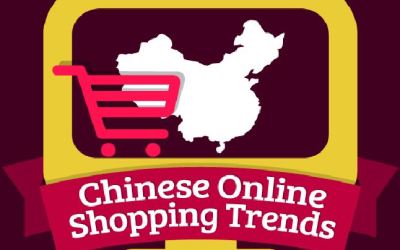Our China Blog
Marketing in China: WeChat Brand Account vs. Native Mobile App
Providing platform for brands to reach customers on their smartphones is the main WeChat‘s appeal to marketers in China. Central to this appeal is WeChat’s friendly ecosystem of mini-apps that can be accessed within the main app by following official brand accounts.
In some ways, an official account resembles a native app which raises an important question: should a brand setup an app, an official account or both? read more…
Creative Ways for Leveraging WeChat for Brand Marketing
Very few mobile apps can rival WeChat in popularity in China. In fact, for the majority of smartphone users, the total time spent on WeChat surpasses any other activity associated with the mobile devices, including the actual talk time.
Thanks to its business friendly ecosystem, brands have been enthusiastically embracing the platform and creating new ways to interact and engage with existing and potential customers. read more…
WeChat Worldwide Presence
Over the last 2 years, it has become apparent that WeChat rules supreme among Chinese social platforms. The second biggest platform, Sina Weibo, continues losing users to WeChat for a number of reasons, some of which were discussed in my earlier posts.
The recent data compiled by WeAreSocial, reveals that WeChat has been also gaining ground in a number of other international markets.
First of all, for the sake of completeness, here is the data on China where WeChat is currently the most popular social network: read more…
Tencent Rivals Facebook in Total Number of Social Media Users
Not many people doubt the fact that Facebook outnumbers any social media platform in terms of world wide number of users. In addition to claiming over 1.3 billion accounts, Facebook has further solidified its top position in mobile space by acquiring hugely successful WhatsApp and launching its own Facebook messenger app. If that wasn’t enough, Facebook now owns another hip social media platform, Instagram, which is also primarily mobile based.
However, recent figures from WeAreSocial presentation, (WeAreSocial is a top international digital agency), reveal that, in fact, Tencent, Chinese digital tech giant, is getting very close to Facebook in terms of total active users it serves. read more…
Is China’s RenRen Still Relevant for Marketing?
Renren, which was launched in 2005, is often called China’s first generation social media platform. Back in the days, it was dubbed China’s Facebook for almost identical functionality and design. Even its color scheme was the exact copy of Facebook. It also uses apps in much the same way as Facebook does.
Unfortunately, Renren didn’t live up to high expectations, quickly losing the top spot to more popular platforms which were launched later, such as Sina Weibo and then, most recently, WeChat.
Despite its similarities with the world largest social media site, Renren failed to take advantage of the Facebook ban in China, letting other, more dynamic networks, to fill the vacuum. Also, unlike Facebook, it has never been profitable. In fact, there has been significant decrease in revenues across all of its services in 2014, compared to 2013. read more…
How Small Business Can Use KOLs for Marketing in China
In my previous post, I’ve discussed methods of using KOL (Key Opinion Leaders) for China marketing by big brands. Obviously, companies with multimillion marketing budgets have a wide variety of options when in comes to KOLs, especially those involving securing endorsements of celebrities. Most of those methods would be out of reach for small businesses trying to expand their marketing in China through social media.
However, there are still relatively inexpensive ways to take advantage of KOLs on Weibo through a system called Weibo micro task (微任务). My earlier post on brand marketing on Weibo goes through some technical on how to activate this service, so here I’m going to focus on ways to choose a suitable KOL to engage and avoid common mistakes. read more…
How Big Brands Select KOLs for their Marketing Campaigns
Engaging KOLs, which stands for Key Opinion Leaders, for product promotion in China is, almost always, one of the critical components in marketing strategy by big brands. The fact is that Chinese tend to trust information delivered via social media and, especially, by trustworthy people, much more than the one promoted via traditional channels. KOLs are, essentially, individuals or sometimes companies, who are active in social media and enjoy high degree of public trust and credibility. They could be very effective not only in delivering marketing messages to their audience but also make them feel more genuine.
In addition, numerous studies how that word of mouth is, many times, more effective than advertising. Hence, leveraging KOLs for brand marketing is becoming a way to harness that power. read more…
Infographic: Alibaba in Numbers
Alibaba, the company founded some 15 years ago by a former English teacher Jack Ma with borrowed $60,000 has already made a history last year with the largest ever IPO in New York. The company is valued at over 150 billion dollars and it continues to dominate Chinese e-commerce.
In my earlier post about Alibaba, I’ve covered its e-commerce related ecosystem as well as other areas where it is expanding through diverse acquisitions. This new infographic by Go-Globe, Shanghai based web design company, presents some interesting facts and figures about Alibaba and its overall business scope. read more…
Inside Sina Weibo
Sina Weibo is a primary Chinese social media platform that is second only to mobile based WeChat in terms of number of subscribers and monthly active users.
Although, having lost some of the luster to WeChat, Weibo remains one of the most important channels in social media campaigns targeting Chinese market.
Also, from marketers’ standpoint it can be used in a different way and achieve different results compared to its Tencent’s rival.
I’ve covered those differences extensively in my previous posts on WeChat vs. Weibo Part I and WeChat vs. Weibo Part II.
This post is about the functionality of Weibo and how it used. read more…
WeChat Public Account Types: Which One Is Right For Your Brand?
WeChat public accounts continue to increase in importance and effectiveness in brands’ marketing strategy in China. In this post, I’m going to review different types of WeChat public accounts as things have been changing in the last few months.
There are currently 3 types of public accounts, subscription, service and corporate.
Corporate accounts, that are sometimes called enterprise, are designed for internal company use such as sharing memos, private group chat or as a simple project and task management system. read more…
Marketing on Chinese Social Media: WeChat vs. Weibo. Part II.
Continuing from my previous discussion on the issues to be taken into account for marketing on WeChat vs. Weibo, here is the second part of the list. Clearly, both services offer lucrative opportunities for marketing but, in order to choose the most suitable platform, the important differences must be understood first: read more…
Marketing on Chinese Social Media: WeChat vs. Weibo. Part I.
WeChat and Weibo currently dominate Chinese social media landscape. In the last year or so, WeChat has surpassed Weibo in size and popularity, although, with its enormous user base, Weibo still remains a formidable force in the social media. While there are significant differences between the platforms, both WeChat and Weibo offer attractive opportunities for marketing.
This is first part of the list of factors to consider before deciding which platform is more suitable to deliver a specific marketing message: read more…
Infographic: Chinese Online Shopping Trends
An online market research group, Go-Globe.com has recently released their new infographic focusing on China’s online shopping trends in the last 3-4 years.
Apart from the obvious fact of continued growth of online commerce in China, a few facts from this presentation could be quite insightful. The first point, that I find particularly interesting, is the fact that 28% of online shoppers turn to online shoppers to find a unique item, perhaps not available or easily found in brick-and-mortar equivalents. This number rises to 41% for people below 25. It means that there is an opportunity for further differentiation of online stores that could take advantage of this trend.
The part on major concerns of online shoppers could also provide an insight on how to improve the experience and make the online shopping process more efficient. Apparently, trust issues, such as the product’s authenticity, is still major issue for nearly 80% of the users.
Other figures, that deserve closer look, are about online travel booking being the fastest growing sector of ecommerce in China as well as the fact that almost a third of all online purchases is made via mobile devices.
Here is the entire infographic:
Mobile Videos in China
It has been reported this year that mobile internet access has become the primary way to get online for the majority of Chinese, outnumbering, for the first time, the desktop based access. At the same time, videos, while being increasingly accessed via mobile devices, remain the most popular online content.
According to the latest numbers from iResearch, a consulting firm, in July 2014 there were 270 million mobile video users in China, which represents an increase of 134% from the same period in 2013. read more…
Advertising on Baidu: Most Comprehensive Overview
The explosive growth of the internet in China in the last few years has offered an unprecedented opportunity to Western companies looking to market their brands and products directly to the Chinese.
On the other hand, due to a number reasons, the familiar digital marketing tools, which are mainly run by Google in the Western markets, are not available in China. Google search engine market share in China has fallen below 1% this year and all the Google services, such as Google docs, Google maps, Google analytics etc., have also become blocked from access. read more…
What is Really Behind Baidu’s International Expansion
Baidu Inc. the owner of the largest China’s search engine Baidu.com, has been on a buying spree recently snatching companies locally and abroad. The type of companies Baidu was buying are in line with the grand strategy of moving into mobile space and expanding internationally.
Baidu growth in China has been impressive, although it stayed at somewhere around 60% market share in search engine space last year. With China’s internet users increasingly going mobile, Baidu is right to divert its resources away from the core desktop search business and into mobile applications. read more…
Six Online Productivity Tools I Can’t Live Without
This time I’m going to deviate from the usual topic of marketing for Chinese market and share my experience with the the online productivity tools that I find particularly useful in my day-to-day life, be it for business or personal projects.
I’m often having a hard time remembering how I was getting by before discovering those amazing tools that increased my productivity by at least ten fold, if not by more.
Here is the list of six online productivity tools that I simply can’t live without: read more…
Infographic: Mobile Advertising in China
Mobile has already become the primary route to the internet for a typical Chinese user. Everything, from searches to shopping, is increasingly taking place via mobile phones, primarily from smartphones but also with the web enabled feature handsets.
Popular mobile apps from ecommerce giants like Taobao, Alibaba and Jingdong have made shopping directly from phones a fast, safe and convenient experience. Not surprisingly, mobile advertising has been highly effective to reach tens of millions of those users and the new infographic from Go-Globe backs up those notions with some great visuals. read more…





















